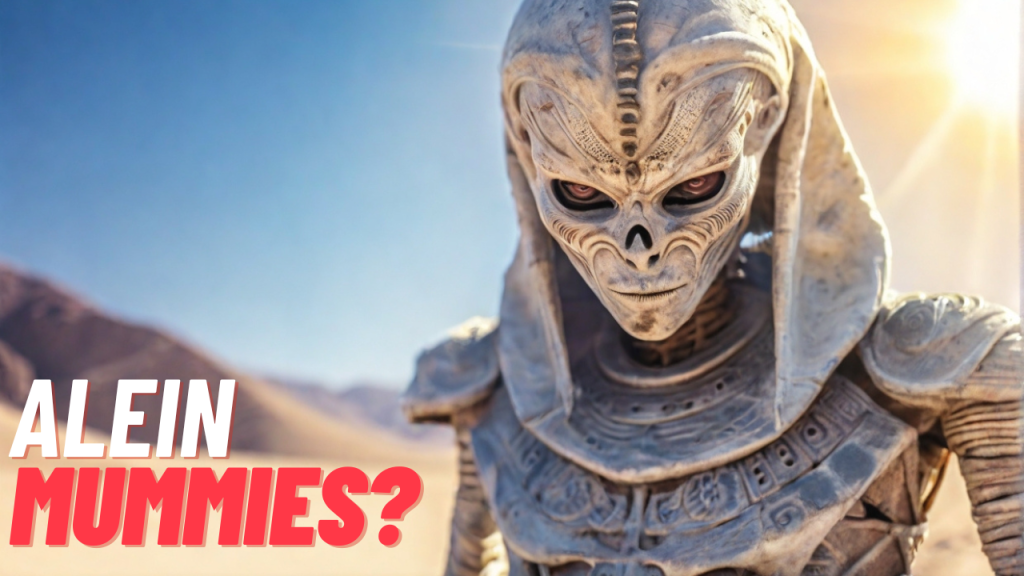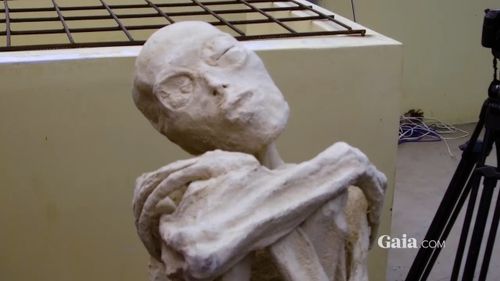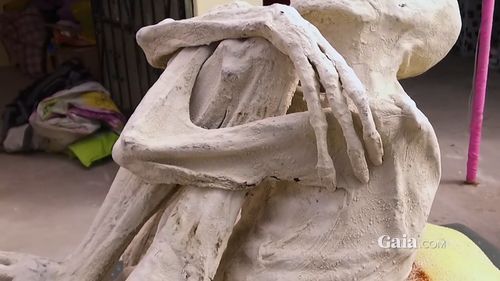
The Nazca Mummies, unearthed in southern Peru between 2015 and 2016, exhibit features like elongated skulls and three-fingered hands that have generated public interest and speculation regarding their biological and cultural origins. This analysis critically examines existing data from various scientific disciplines to elucidate the mummies’ characteristics within a terrestrial framework. While science offers compelling explanations for some of their unusual features, the possibility remains open to a more otherworldly origin.
Cranial Anomalies: Cultural Ritual or Something More?
One of the most striking features of the Nazca Mummies is their elongated skulls. This characteristic, once seen as proof of alien DNA, has been attributed to a cultural practice known as artificial cranial deformation. Binding or shaping the heads of infants was prevalent in the Nazca civilization (100 BCE – 800 CE)

Image Credit (Gaia)
However, the question remains: why did the Nazca engage in such a practice? Some anthropologists theorize it served as a social marker, distinguishing elites or signifying spiritual significance. Others speculate it was linked to astronomical beliefs, aligning the skull shape with celestial bodies. While the motive remains shrouded in the mists of time, the cultural explanation for cranial elongation holds firm under scientific scrutiny.
Three-Fingered Hands: Fabrication or a Genetic Enigma?
Another anomaly that captured the public imagination is the presence of three-fingered hands on some of the mummies. X-rays, however, reveal a more unsettling truth. These “three-fingered hands” are not necessarily the result of genetic mutation or alien anatomy, but rather a macabre manipulation. Cut and rearranged human finger bones create the illusion of an extra-terrestrial digit.
This raises several disturbing questions. Who performed these alterations? Were they motivated by ritualistic practices, a desire to deceive, or something more sinister? While the answers remain elusive, the evidence points towards post-mortem manipulation, casting a shadow of human intervention over the mummies’ enigmatic features. This also begs the question, why? Were they mimicking extraterrestrial beings? Maybe trying to be more like their gods?

Image Credit (Gaia)
The Enigma of DNA: A Door Ajar to the Unknown?
Perhaps the most tantalizing aspect of the Nazca Mummies lies in their genetic makeup. Analyses revealed that 30% of their DNA remains unidentified, failing to match any known species on Earth. This finding, while inconclusive, has fueled speculation about the possibility of extraterrestrial origins. Critics, however, point out the limitations of current DNA analysis techniques and the possibility of contamination or unknown terrestrial organisms.
Despite the skepticism, the unidentified DNA strand cannot be easily dismissed. It represents a gap in our current understanding of life on Earth, a chink in the armor of our scientific knowledge. While an alien origin remains highly improbable, the possibility, however remote, cannot be entirely disregarded.
A Tapestry Woven with Fact and Mystery
The Nazca Mummies are a complex tapestry woven with threads of cultural practices, post-mortem manipulation, and the alluring enigma of the unknown. While science offers robust explanations for their unusual features, the whispers of extraterrestrial origins linger, beckoning further research and critical analysis. In the end, these enigmatic figures serve as a testament to the vastness of the universe, the audacity of human practices, and the limitations of our current understanding. The Nazca Mummies may not be definitive proof of alien life, but they stand as a powerful reminder that the universe holds more secrets than we can fathom, and our journey of discovery has only just begun.





